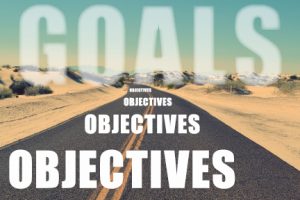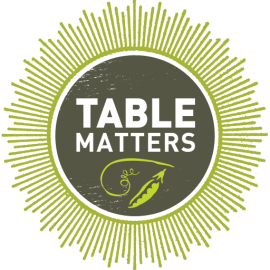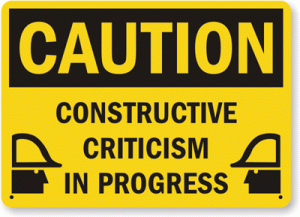It is finally March! For the average human being, March is characterized by the start of spring, and all that comes with it. Nothing evinces the concept of “new beginnings” better than stepping outside and being invigorated by the salient perfume of early blooms and the sonorous chirps of swallows and chickadees.
But students aren’t average human beings.
For students, March is characterized as being month 7 of the academic  year, and as being the proverbial mini-boss battle before the final boss battle (final exams). The tantalizing promise of warm weather is nothing but a tease; an unachievable reward for completing all of your assignments. But the deadlines keep coming, and your recollection of the world outside of lecture halls becomes hazier than ever. And much like in the video games, conquest over the mini-boss leads directly to the boss battle, with no time in between to stop and smell the cherry blossoms.
year, and as being the proverbial mini-boss battle before the final boss battle (final exams). The tantalizing promise of warm weather is nothing but a tease; an unachievable reward for completing all of your assignments. But the deadlines keep coming, and your recollection of the world outside of lecture halls becomes hazier than ever. And much like in the video games, conquest over the mini-boss leads directly to the boss battle, with no time in between to stop and smell the cherry blossoms.
What do trees look like again, anyways?
So maybe the quintessential student idea of springtime “new beginnings” is upgrading from the daily double espresso to a triple. Being the preamble for finals, though, March is a particularly relevant time for students to engage in one uniquely relevant behavior: reflection.

Sometimes, goals which are too lofty can become overwhelming, which is why it is important to break them down into bite-sized objectives to stay on track with the project work.
Which brings us to today’s blog post.
In writing today’s post, we will look back at our objective and achievements so far, regarding our work within LFS 350 and on our community project. After outlining some of the challenges and barriers we have encountered so far, we hope to use our writing as a catalyst for generating potential solutions to said challenges. We end on thoughts to keep in mind, looking forward when moving towards the end of our project (and our semester).
A Wild Timeline Appears
To get a better sense of where we are at in our project and construct a framework for our way forward, we have brainstormed a timeline for what we hope to achieve in the following weeks. These milestones will serve as nested goals and help keep us on track with our project, tackling bite-sized steps towards accomplishing big things.
WEEKS 1 – 2 (Course Introductions):
Objectives:
- Familiarize ourselves with the structure of LFS 350 and the core concepts of the course.
- Get a sense for the available project opportunities and narrow down our interests.
- Form final project groups and get to know each other.
Achievements:
- Over the course of weeks 1 and 2, we developed an understanding of our role as students in LFS 350 through the lens of community engaged experiential learning. We also covered key course concepts such as community food security, transdisciplinary science, and asset-based community development, concepts to be conscious of when discussing social change.
- Presented with a run-down of the available project opportunities and potential community partners, we individually ranked our top 3 interests in a preliminary poll. Then, after being given further time for reflection, final ranking decisions were submitted.
- Final project groups based on our ranking preferences were announced and the group members were introduced to each other for the first time. We discussed our motivation for choosing the project, our personal strengths, and what we hoped to get out of the project experience.
WEEKS 3 – 4 (First Steps):
Objectives:
- Contact community partners and arrange a meeting in person.
- Clarify project details, scope, and role of group in contributing to project.
- Establish framework for data collection and communication.
- Reflect on progress so far through Blog Post 1.

- Draft a project proposal.
Achievements:
- Following our first meeting as a group, we contacted our community partners—the North Shore Table Matters Network—in order to get in touch with Jenn Meilleur and Samantha Gambling, our project supervisors. We arranged a meeting in person at Lonsdale Quay during the first Flexible Learning session on January 23rd, 2017.
- At our meeting with Jenn and Sam, we discussed the background of the North Shore Table Matters Network, the unique food system challenges in the North Shore, and the motivation for the food asset mapping project. We also clarified the details of how our group would contribute to the project, which was to be through building an up-to-date online database of the food assets in the North Shore, under a set of specified categories.
- After our meeting, Jenn and Sam composed a detailed set of instructions on how data was to be collected, verified, and entered into the online database, including instructions for contacting food asset resources. We decided to keep in touch with Jenn and Sam via weekly email updates.
- Through writing our previous blog post, we reviewed our experience meeting with our community partners and reflected on the preliminary stages of preparing to jump into our project. Overall, our meeting was very successful and helped us develop a better sense for our role in the food asset mapping project, as well as how we would pursue it.
- A project proposal detailing our project’s purpose, background, significance, objectives, inquiry questions, and methods was drafted.
WEEKS 5 – 6 (Gearing Up):
Objectives:
- Review feedback on project proposal and revise/rethink project as necessary.
- Write and submit finalized project proposal.
- Begin collecting and verifying data about North Shore food assets as agreed upon through project framework and proposed methods.
- Reflect on progress up until this blog post.
Achievements:
- With the help our our TA, we reviewed our project proposal
draft and identified necessary changes to the project’s objectives and methods in order to clarify our desired outcomes and the approaches we would take to achieve these.
- In our final project proposal we defined our objectives to be: 1) developing a database of relevant, up-to-date information about food assets in the North Shore, to be used in the creation and maintenance of an online food asset map; and 2) evaluating the effectiveness of the resulting map as a resource for North Shore community members and presenting the results to our community partners. We further clarified our methodological approach to these goals. The final project proposal was submitted and approved.
- We tested out our methods for data collection and verification, including contacting food asset resources in several of our categories, to get a sense of the effectiveness of the approach and anything we may need to reconsider.
- In writing this blog post, we have reflected on the progress of our project from Week 1 to Week 6, and noted the challenges we have faced, the lessons we have learned, and how we hope to apply these in the coming weeks.
MOVING FORWARD:
In the following weeks, our group will have to reflect on some of the challenges we have faced in our project so far and overcome these strategically. In doing so, we can maximize our remaining time in LFS 350 to achieve the goals we set for ourselves in our project proposal. A number of steps remain to be undertaken towards reaching our objectives, and dealing with some of the difficulties we have discussed above. Here is a breakdown of some of our nested goals in the coming weeks of project work.
- Discuss difficulties in obtaining data after testing out approach.
- Clarify uncertainties in project categories.
- Strategize towards more efficient and effective approaches for data collection and add support where needed, and develop an agreed upon set of best practices for collecting and validating information.
- Present at North Shore Table Matters Network meeting on March 2nd.
- Work on collecting and validating data through best practices approach.
- Submit data to be entered into food asset google map by community partners.
- Test out google map with community partners and gather feedback.
- Summarize findings and develop infographic.
- Reflect on project success through group blog postings and final project report.
Now What?
Immersing ourselves in this type of community work, it is easy to forget that this project has been assigned as a school project; and as such, is a learning experience. We utilize the following framework to reflect on some of the significant challenges we have encountered, in hopes of moving forward towards building solutions.
What??
We have come across various difficulties while working on our North Shore Food Asset Community Map. After our first meeting with Sam and Jenn, we realized that the North Shore is larger than what we were expecting it to be! Most of us thought it was limited to North Vancouver and West Vancouver. Through Sam and Jenn, we learned that the North Shore is a geographically large and socially, culturally, and economically distinct region consisting of the District of West Vancouver, the City of North Vancouver, the District of North Vancouver, the Municipality of Lions Bay, and the Municipality of Bowen Island. Given the big size of this area that we are focusing on, we understand how limited time we have been given on top of our other priorities as students. As such, we realized that time could be a limiting factor if we were to map every part of it. Since the course started, every week we had something due such as blogs, proposal, quizzes, etc., and feel that we have not had enough time to work on the project as much as we wanted. Considering the amount of time needed to be spent on this project, setting aside time merely for completion of our project has been a big challenge.
In our food asset map, our community partner has provided us with a list to be filled out with information containing 8 categories of “food assets”, each with a number of subcategories.
Due to North Shore’s large territory and our time restraints, this task may have come off as overwhelming. After submitting our proposal draft and coming into an ease, we started gathering data off the online resources as a group. After trying to set a date that works for every single member of the group to work on the project, we realized that it will be more productive to set deadlines for the completion of the assigned work. Each member in our group has different schedules inside and out of the university, presenting further challenges for coordinating our work in a timely manner. At the beginning there were times that some of the team members could not contribute as much because of their time restrains although they wanted to participate. Trying to overcome this challenge, it was decided afterwards to assign a category to each group member to work on in his or her available time. Due to this fact, our final product may not be as coherent as we wanted since each member may not have the time to look at and coordinate findings between the categories they have completed with those of others.
So What??
Although we may perform well individually, the past fews weeks has made us realize that in order to achieve the objectives we have proposed, we need to start tackling problems collectively. Our lack of cohesiveness may have deleterious implications for our finished product. A more team-based effort (as opposed to a “divide and conquer” effort) will allow us to capitalize on each others feedback, and be more perceptive to each other’s ideas and beliefs. This may translate into a more cohesive food asset map, improving the usefulness of the tool.
Now What ??
In order to overcome the difficulties presented to our group, we have decided that each member should pair up with another team member. Implementing this new strategy proposes solutions to our lack of cohesiveness. First, this allows for opinions and feedback between the pair, eliminating individuality and adding productive conflict when working on a category. Even though it might take longer for each pair to

Working in pairs will provide opportunities for constructive criticism and creative conflict, which will hopefully lead to better project outcomes and greater effort in data collection.
complete the assigned task compared to working individually, the added conflict and frustration could help inspire creativity and increase productivity as mentioned by Tim Harford in his podcast “How frustration can make us more creative” (Harford, 2016). Second, this allows everyone to flexibly work around each of our schedules while also reaping the benefits in forming a group. Also realizing time as an asset to our project, we aim to work more efficiently in meetings and get parts done as much as we possibly can in every meeting due to time conflicts among group members and the limited amount of time given to us. That being said, it is difficult to list the challenges that we might come across for the following weeks. Despite these challenges, we aim to not let these obstacles hinder our group’s progress and alternatively make it a stepping stone, an opportunity for us to grow and learn from these “messy” experiences in order to succeed in our future goals (Freakonomics, 2015).
Concluding Thoughts
In developing the resources required for the food asset map, it is important for us to ask: whom will this project reach? From a food justice lens, what this question is really asking is: how can this food map help bridge the gaps in equity existent within North Shore communities? An equally exciting question is: will the map reveal unforeseen demographic inequities? Follow up research on questions from the last blog has presented us with data on the unexpectedly high rates of poverty and food insecurity in the North Shore, a burden disproportionately borne by lone-parent families, recent immigrants, and seniors (SPARC BC, 2006).

The North Shore is known as one of the wealthiest areas of the Lower Mainland, however not everyone who lives here is a millionaire. Many families are severely affected by the high cost of housing, especially in terms of their other spending on living costs such as food.
Our process of data collection must be mindful of this.
In lectures, we explored the trend towards how local food movements in Metro Vancouver seem to have underrepresented the large Chinese-Canadian agricultural community, running contrary to food justice’s ideation of equity (Gibb and Wittman, 2013). Furthermore, we explored challenges to food security that arise from the North Shore’s housing cost, which is much higher than the provincial average (Miewald and Ostry, 2014). Housing is a fixed cost every month, and with average rents and mortgage payments of over $1000 per month in the Districts of North and West Vancouver, many North Shore residents do not have enough money to cover other food costs since they spend a large proportion of their income on housing (SPARC BC, 2006).
Populations characterized by compromised housing may even be absent from demographic statistics. Going forward, we must be mindful of these inequities when attempting to collect information, as to not accidentally further perpetuate these injustices. Our lingering curiosities lead us to be mindful of ways in which this project could potentially reach seniors (notoriously tech-unsavvy) and those of compromised housing (who may not have access to internet).
That all but sums up our progress for now. Catch you in the next part of our blog series!
References:
Cohn, G.(Producer). (2015, May 05-20). Failure is your friend: A freakonomics Radio Rebroadcast [Audio podcast]. Retrieved from http://freakonomics.com/podcast/failure-is-your-friend-a-freakonomics-radio-rebroadcast
Gibb, N., & Wittman, H. (2013). Parallel alternatives: Chinese-canadian farmers and the metro vancouver local food movement. Local Environment, 18(1), 1.
Harford, T.(2016). Tim Harford: how messy problems can inspire creativity. Retrieved from https://www.youtube.com/watch?v=Jd_j_kw_jZQ
Miewald, C., & Ostry, A. (2014). A Warm Meal and a Bed: Intersections of Housing and Food Security in Vancouver’s Downtown Eastside. Housing Studies, 29(6), 709–729.
Social Planning and Research Council of British Columbia. (2006). Food security for all: North Shore food system assessment and community food action plan. Retrieved from: https://www.vch.ca/media/CFAI_Summary_North_Shore.pdf
